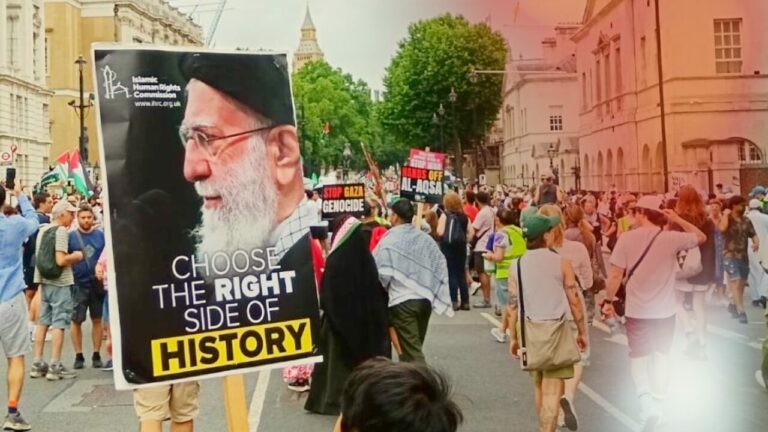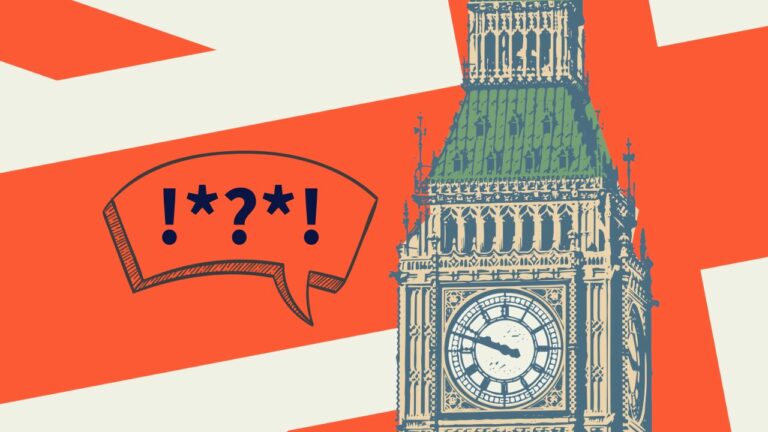Abstract: The following are extracts from a recent report on house demolitions in East Jerusalem authored by Dr. Meir Margalit and published by the Israeli Committee Against House Demolitions. The chapters explore the underlying motivation behind house demolitions and set forth musings as to the significance of home demolition for a family; what East Jerusalemites undergo from the time they are served the demolition order until the bulldozer arrives: the scars left on the souls of young children, and the effects of house demolition on the fabric of life in Jerusalem.
Introduction
The years 2003–2005 were among the worst known to East Jerusalem for house demolitions; not only did the number of demolitions reach a peak of 350 buildings, but there was also an unprecedented severity in punitive enforcement measures. Residents of East Jerusalem found themselves: in a far more severe situation: enforcement measures were stepped up and there was an increase in red tape; those wishing to build legally found themselves frustrated at almost every turn.
This report shows that from 2003 until 2005 the authorities took increasing steps to tighten the noose around the necks of East Jerusalem residents; faced with the incessant proliferation of bureaucratic, planning, legal, and economic hurdles, making it hopeless to obtain a building permit, they had to resort to unlicensed construction. Thus, fewer than 100 buildings were built under licence in East Jerusalem each year. Yet in the same period demand for housing in East Jerusalem rose steeply, due to the Wall construction around Jerusalem. As a result, thousands were forced inside Jerusalem’s municipal boundaries, enormously boosting illegal construction, which peaked in 2004 at 1,189 houses. Various red lines were crossed during that period. Shamelessly eager to demolish houses at all costs, municipal and Ministry of Interior inspectors resorted to underhand tactics of evasion or deception, disregarding court-issued decisions. The inspectors were prepared to trample the rule of law underfoot, so that the bulldozer did not, heaven forbid, return to base without having destroyed a home.
All this took place as Rabbi Uri Lupoliansky entered his first term of office as Mayor of Jerusalem, with Avraham Poraz and then Ophir Pines-Paz as Ministers of the Interior.
…
Importantly, on March 13, 2007 the UN Committee on the Elimination of Racial Discrimination (CERD), delivered its CONSIDERATION OF REPORTS SUBMITTED BY STATES PARTIES UNDER ARTICLE 9 OF THE CONVENTION, to which ICAHD contributed. The Concluding Observations of the Committee (Israel) state:
“35. The Committee notes with concern the application in the Occupied Palestinian Territories of different laws, policies and practices to Palestinians on the one hand, and to Israelis on the other hand. It is concerned, in particular, by information about unequal distribution of water resources to the detriment of Palestinians, about the disproportionate targeting of Palestinians in house demolitions and about the application of different criminal laws leading to prolonged detention and harsher punishments for Palestinians for the same offences. (articles 2, 3 and 5)”
The Committee recommends “The State party should ensure equal access to water resources to all without any discrimination. The Committee also reiterates its call for a halt to the demolition of Arab properties particularly in East Jerusalem and for respect for property rights irrespective of the ethnic or national origin of the owner. Although different legal regimes may apply to Israeli citizens living in the Occupied Palestinian Territories and Palestinians, the State party should ensure that the same crime is judged equally not taking into consideration the citizenship of the perpetrator.”
The Underlying Motive of Jerusalem’s Planning and Building Policy
Matti Hutta, former Chairman of the District Commission of the Ministry of the Interior in the Jerusalem District, said in a press interview that planning decisions always have a political background:
“Let’s not talk of political decisions but of decisions arising from policy. My decisions and those of the Commission in general are reached in consideration of a certain planning policy to which we are committed. Politics is always there, I am not saying it isn’t, but political considerations dictate policy, and that is how things work.”[1]
Behind the difficulties that the Municipality piles up for East Jerusalemites wishing to build homes is a combination of ideology, budgetary difficulties and a chronically cumbersome bureaucracy.
The ideological motive is rooted in a policy decision establishing that a demographic balance must be maintained in the city at a ratio of 70% Jews to 30% Palestinians. The ministerial committee known as the Gafni Commission laid down this policy in 1973. Underlying the policy was concern at the rate of increase of the Palestinian population in Jerusalem and the fear that within a few years, they would succeed in changing the Jewish character of the city and would even choose the mayor! A municipal paper prepared by the Planning Policy Division in 1977 states, “One of the cornerstones of Jerusalem’s planning process is…the preservation of the demographic balance between the ethnic groups [in accordance with] the resolution of the Government of Israel.” [2]
The new outline scheme currently being prepared reiterates the same trend of preserving “demographic balance in accordance with Government resolutions,” even though the planners recognize the fact that, according to the forecasts, the increase in the population toward 2020 will be in a ratio of 40-60. Amir Cheshin, who observed the planning process in East Jerusalem in the Teddy Kollek era, attests that in Jerusalem:
Israel has transformed urban planning into a tool in the hands of the Government whose object is to prevent the spread of the non-Jewish population of the city. This was a cruel policy, if only by reason of the fact that it disregarded the needs (not to mention the rights) of the Palestinian residents. Israel regarded the institution of a stringent urban planning policy as a way to restrict the number of new houses being constructed in Palestinian neighbourhoods, and thus ensure that the percentage of Palestinian residents in the city’s population – 28.8% in 1967 – would not increase. If we permit ‘too many’ new homes to be built in Palestinian neighbourhoods, that will mean ‘too many’ Palestinian residents in the city. The idea is to move as many Jewish residents as possible to East Jerusalem and to move as many Palestinians as possible out of the city altogether. Housing policy in East Jerusalem has focused on this numbers game. [3]
The Government assumed that circumscribing the building space permitted to Palestinians would put the brakes on the demographic increase, and that if they were forbidden to build they would have to abandon the city. The most outstanding example of that trend was Master Plan-2003 of the Shuafat and Beit Hanina areas, which was supposed to permit the construction of 17,000 housing units. The Ministry of Interior slashed it to 7,500 housing units on the grounds that the original figure was incompatible with the policy of preserving the demographic balance.[4] The same fear of demographic increase underlies the Ministry of Interior’s three moves aiming to reduce the city’s Palestinian population, all of which are still in force today: confiscation of identity cards from residents moving outside the city’s municipal boundary, obstacles placed before the registration of infants in the Population Register, and difficulties created for those trying to bring spouses from the territories or Jordan within the municipal boundary.
House Demolition in Violation of the Law
One of the gravest phenomena since 2003 has been the demolition of houses in violation of a court-ordered stay. While such things have occurred in previous years, the trend has taken on worrying dimensions since 2003.
An administrative demolition order is issued against an unlawful building and not against the house owner. Therefore, the authorities are not obliged to deliver the order to a specific individual but rather, to post the order in a conspicuous place on the walls of the house. On finding that they have been served a demolition order, homeowners hire a lawyer who applies on their behalf to the Local Court with a motion to suspend the order or to stay proceedings. The judicial system normally honours the right of a citizen, or in the case of East Jerusalemites, a “resident,” to appeal a demolition order and issues a stay of proceedings until a court hearing can take place in the presence of both parties. At these hearings, the court examines the validity of the order in light of various parameters such as the administrative position, and whether a building was inhabited at the time the order was issued. Recently, another aspect has come under examination following a recent ruling to the effect that an illegal structure must not be demolished if there is a reasonable chance of it being issued a building permit in the future. Stays of proceedings are for a limited amount of time, during which all actions by the authority must be suspended.
When the court upholds the resident’s motion and rules in favour of a stay of proceedings, the authorities’ attorney present at the hearing must notify the Construction Supervision Unit. On more than one occasion, however, the notice fails to reach the appropriate official in a timely manner, and the bulldozers set out unaware that a stay of proceedings order has been issued. In these instances, if the owners are present at the site and have the order on hand, they will give it to the inspector in charge and the demolition is cancelled.
A similar situation takes place when the motion to the court is made at the last minute, when police forces and bulldozers are actually approaching the house and starting to seal the area. There are a number of reasons why this happens. Usually, it is because the home-owners were unaware of the existence of a demolition order as it was posted in some concealed spot, or the wind blew it away, or because the home-owners had been careless, or because they could not afford a lawyer. Whatever the reason, a lawyer sometimes manages to obtain a stay of proceedings order moments before demolition commences. This is the start of a game of cat and mouse, in which the Supervisor of Construction tries to avoid receiving the order. An experienced lawyer, knowing the demolition is imminent, will not wait for the attorney of the demolishing authority to notify Supervision to call a halt, and will not make do with sending a fax, which will surely arrive after the house has been destroyed. Instead, he will telephone the home-owner, present at the site, to say that he has secured a stay of proceedings order, and will hasten to the Municipality or the Ministry of Interior to deliver the order personally to the right party.
It is at this point that exceptionally abusive behaviour on the part of the authorities begins. When the home-owner informs the inspector at the site that a stay of proceedings order has been issued, the inspector ignores him, and may even refuse to accept a telephone call from the lawyer. He will dismiss the home-owner’s information, claiming that until he sees the stay of proceedings order with his own eyes, the demolition order remains effective. In such instances, neither explanations nor pleading will help. The inspector will destroy the house without examining the occupants’ claims. He will urge the bulldozers to get to work with all haste and speed before the home-owner arrives with the precious order. Worse still is the fact that the Israeli Police, cordoning off the area so as to prevent disturbance, prevent the home-owner or his lawyer from physically presenting the order to the inspector. Moreover, in one instance similar to that described above, a police officer receiving the order before it reached the inspector at the site, refrained from stopping the demolition even though he had the stop order in hand, thereby becoming party to breach of a court order. All the above gives rise to an impression of collaboration between the Police and the Supervisor of Construction, in order to prevent the halting of planned demolitions.
Home demolitions in violation of a stay of proceedings order arouse indignation, especially because the authorities engaged in supervising construction maintain that they demolish homes in the name of the law. Triumphantly waving their court rulings, spouting platitudes about the supremacy of the law, they set out to hunt down illegal houses and issue demolition orders in the name of law and justice. On the face of it, never a single consideration enters their heads – they are solely concerned with upholding the rule of law and dignity of the court. Resolutely determined to ensure compliance with the law, they storm the homes of residents guilty of nothing more than having constructed a shelter for their family when unable to procure a building permit, whether for bureaucratic or budgetary reasons. Either way, the inspectors of the Municipality and the Ministry of Interior declare themselves to be mere messengers of the court, or indeed, the long arm of the law in East Jerusalem. In face of criticism from human rights groups opposed to the demolitions, they raise a sanctimonious gaze heavenward, innocently wondering what all the fuss is about – after all, doesn’t everyone want to live in a country under the rule of law, and aren’t we all bound to uphold decisions of the courts?
Contrary to the impression the authorities have created, since 2003 there have been many cases in which homes have been demolished in violation of court orders. All too many cases provide proof that the inspectors of both the Municipality and the Ministry of Interior have no qualms about bypassing the law as long as the bulldozer is fed its pound of flesh. Had it happened only once, some ‘error’ might have been involved. If there were only two examples, it could be called a ‘mishap’ (inspectors could argue that there was no cellular reception in the area, or they could not hear the phone ringing due to the noise of the bulldozers). Where multiple cases are involved, it is simply a tactic. Our arguments are also reinforced by the report of the Jerusalem Comptroller exposing severe ‘irregularities’ in all matters pertaining to municipal procedures for the issue of demolition orders.
It is right to dwell on this issue because it involves more than the demolition of homes. What we are witnessing is the systematic destruction of democracy and a consistent erosion of the rule of law. The human face of society is being ruthlessly trampled. It is important to publicize this phenomenon in order to explode the myth that we are dealing with two camps: a ‘law-abiding’ camp, consisting of the State authorities, and a ‘lawbreaking’ camp consisting always of Palestinians. It is necessary to shed light on a reality in which it is the State itself that is trampling the law. Lawbreaking of this kind has long since become an administrative norm, which bothers the authorities not in the least. The last few years have exposed a further deterioration in administrative culture, where the authorities permit themselves contempt of court by violating express orders prohibiting the demolition of homes.
The Demolition Process
The Planning and Building Law (1965) requires the authorities to prevent illegal construction. The law treats building offences very severely, defining them as criminal offences to all intents and purposes. Accordingly, the State charges the owner of the building on two counts: ‘Unlawful Use of Land’ (Section 145A) and ‘Using a building without a Permit’ (Section 204A).
The legislator has provided two ways of destroying homes: (A) – in accordance with ‘administrative demolition orders’ whereby the demolition may be executed without any legal proceeding within 30 days of date of issuance of the order, or (B) – in accordance with ‘judicial demolition orders,’ which require an indictment to be brought and legal proceedings to be conducted.
The ordeal begins when a municipal inspector, accompanied by police, affixes a demolition order to the walls of the building. Since the demolition order is issued against the building and not against a person, there is no need to deliver the order to the homeowner. Starting 24 hours after delivery, the bulldozer may arrive at any time. The posting of the order is questionable in and of itself. Time and time again we hear of residents who swear that they never saw any demolition order. The testimony of an ex-municipal inspector, who will remain anonymous due to a legal battle he has against the Municipality, proves that there are a thousand ways to make sure that the order will be hidden from the home-owner, thus preventing him from going to court. For example, the order may be affixed at some concealed spot in the building. In winter it is generally posted on an outside wall, so that the wind and rain will send it flying. It may also be placed on the floor, where it is hardly likely to stay put. And there is no end to similar such devices.
Administrative orders are top priority for the authorities since if they miss the 30 days provided by law, the order will expire and a long, costly and laborious judicial proceeding must be launched. A house issued a judicial order enters on a track that is liable to last years. It starts at the local court, passes via the Magistrates Court, the District Court and may even reach the Supreme Court. However, the fate of most homes entering a judicial process is predetermined, since the court cannot approve illegal construction, even if it is discomfited by the policy underlying demolitions.
This was clearly expressed by Chief Justice Aharon Barak,
“I frequently feel compelled to act in accordance with the law even though my subjective feelings would direct otherwise. An outstanding example is the demolition of houses. Rulings are made in accordance with the law, but I would be very glad if the legislator would provide otherwise and prohibit the demolition of homes. [5]
Moreover, most East Jerusalem residents cannot apply to the HCJ because of the high legal cost involved.
Once the court has approved the demolition order, the bulldozer can turn up next day or at any other moment. The strain experienced in this waiting period is tremendous, causing health problems, domestic violence and anxiety. Men fearing for the fate of their homes and families are afraid to leave the home and often lose their jobs due to frequent absence. This is all part of a deliberate process the authorities call “deterrence.” An official at the Civil Administration told the Israeli Committee Against House Demolitions that fear and intimidation are important components in the enforcement policy since they “deter” Palestinians from building.
When the dreaded day arrives, it does so without warning. Demolitions take place in some ad hoc manner, with no discernible pattern, and can happen anywhere and at any time.[6] This, too, is part of the fear theme underlying the “deterrence” policy. The demolition crews, accompanied by hundreds of soldiers, police officers and officials, generally appear early in the morning, usually after the men have left for work. The family is sometimes given a mere few minutes in which to take out its belongings before the bulldozers get to work, and when family and neighbours evidence resistance – or at least a protest – they are generally removed by force from the home. The work crews then throw the furniture out of the house. In addition to the destruction of the house, the ruin of private property deals the family a severe economic blow – not to mention the emotional suffering undergone by people looking on as their most personal possessions are slung out into the rain, sun and dirt. The bulldozer then proceeds with its methodical work of demolition. Sometimes, resistance to demolition elicits a great deal of violence: people are beaten, arrested, killed – as happened in the case of Zaki Nur-A-Din Obeid when he attempted to prevent the destruction of a home in Issawiya on 18 January 2001. And always, people are humiliated. Family and neighbours look on with restrained fury, as the home becomes a pile of rubble.
Needless to say, families whose homes have been destroyed are abandoned to their fate. No use looking for social workers coming to the aid of families in distress, as one finds in West Jerusalem for people in far less dire straits. The families must move in with relatives or put up tents (one family in Jabel Mukaber is living in a bus) or pay out more money to rent an apartment.
What a Destroyed Home Means
The emotional suffering involved in destruction of a family’s home is unquantifiable. A home is far more than a mere physical structure. It is a symbolic centre; the site where the most intimate personal living takes place. It is a place of refuge, the family’s physical representation, and its “home.” It is the consistent physical presence in life, and location of familiar objects. For Palestinians, a house has added significance. Sons getting married build their homes near the parental home, thus preserving not only physical proximity but also continuity in the holding of ancestral lands. This latter aspect is of special importance in an agrarian society, and even more important to refugees torn from their homes in 1948 or 1967. Demolition of homes, similar to their expropriation, is one more aspect of the assault on a person’s very being and identity.
Men, women and children experience demolition differently. Men are deeply humiliated, as demolition means you are unable to protect your family or provide it with basic shelter. It also signifies loss of the living bond with your family’s land, your personal heritage and that of your people. It frequently happens that men weep as their homes are destroyed (and for a long time afterwards), but they also experience rage, swear vengeance and intend to rebuild – or else retreat from active family life.
For women, their image and role in the family changes to the point of being destroyed. Palestinian women usually do not pursue a career outside the home. Their entire status as wives, mothers and human beings in general finds expression in home life. When their homes are destroyed, they lose their entire social orientation. Some sink into grief and their behaviour – expressed in weeping, wailing and depression – strongly resembles that of people who have lost loved ones. A home destroyed is like a near and dear one who has died – a space that cannot be filled even if the family manages to find alternative accommodation. The alternative accommodation itself is ruinous. A woman is required to move into the home space of another woman – her mother or sister-in-law – and to a great extent, forfeits supervision over her husband and children. Disputes within extended families forced to share crowded living quarters may become chronic and tensions frequently develop between spouses. If the demolition breaks the husband, it may well happen that the wife assumes predominance in the family. In such cases, rebuilding will usually not take place, since women generally do not have the freedom to organise such matters. [7]
Childhood traumas
For children, the act of demolition and the months preceding it are traumatic. They witness the fear and helplessness of their parents, living constantly in an atmosphere of insecurity. They see people dear to them beaten, losing their homes, experiencing humiliation at the hands of inspectors in the field. After all this, they must bear the noise and violence, the uprooting and destruction of their home, their world, their toys. The children will bear the lifelong imprint of all this. There is an abundance of evidence of trauma and distress among children: bedwetting, nightmares, fear of leaving home lest the child “abandon” his parents or siblings to the mercies of the military, sharp decrease in school grades, “dropping out” and also effects of exposure to violence at home, the type of violence that will sometimes erupt as a result of impoverishment, uprooting and humiliation. Children are also put in a position where they can no longer depend on parents for shelter, one of two basic elements, along with food, in a provider/dependent relationship. Basic human rights are also, obviously, denied.
There can be no doubt: the bulldozer can take its place alongside the tank as a symbol of the relations Israel conducts with the Palestinians. Both should be emblazoned on the national flag. Both are an expression of the aggression that has overtaken the Israeli national experience. One complements the work of the other. Both symbolise the dark side of the ongoing Israeli project designed to uproot the Palestinians and oust them from the State altogether.
Where Myth and Reality Part Company
In the eyes of the Municipality, illegal construction is a political manifestation of far-reaching implications that endangers the very under pinnings of Israeli rule in East Jerusalem. This concept dictates the nature of solutions advanced for coping with the problem, all of which fall within the definition of aggressive enforcement. The Municipality and the Ministry of Interior view any house built without a permit as another ploy in the struggle for control of Jerusalem, financed by the Palestinian Authority. The home-owner is perceived as a saboteur and rebel, waging a war of attrition against the Israeli administration.
The Israeli complaint of “political building” clearly proves that fear has overcome rationality. The Israeli regime lives haunted by the feeling that Jewish sovereignty over Jerusalem is in danger. In this state of paranoia, every house, tree, and potted plant become part of a worldwide political conspiracy. Behind every wall stands money from the Palestinian Authority, from Saudi Arabia or from Hamas; every floor tile takes on the guise of an explosive charge. Out of fear, a national conspiracy theory has grown that sees danger lurking in every shadow, and that treats every building as part of an all-out offensive against the State. The Israeli administration has created a reality entirely woven out of erroneous perceptions, a distorted world-view that dictates disastrous decisions, necessarily causing genuine problems to be wrongly addressed, undermining the co-existence of the two peoples, and even further complicating the Israeli-Palestinian conflict.
In psychology, it is known that there is a dangerous tendency for people to create what they fear. Thus, modern Israel.
Conclusion
The arsenal of solutions the Municipality has assembled is entirely aggressive. The thinking is that a national threat calls for a national response, invariably aggressive. Accordingly, a Jewish house without a permit is an urban problem; but a Palestinian home without a permit is a strategic threat. A Jew building without a permit is ‘cocking a snook at the law’; a Palestinian doing the same is defying Jewish sovereignty over Jerusalem. Thus the arsenal of solutions advanced by the authorities to cope with non-permit construction is restricted to a series of useless, violent acts of enforcement that include demolition, heavy fines, confiscation of equipment, or imprisonment of home-owners – solutions that fall far short of resolving the problem, because life’s needs are stronger than the whip wielded by the Municipality. Palestinians in East Jerusalem are prepared to take risks because the need for shelter is stronger than bulldozers. People do not put all their worldly goods at risk because of some political prompting. A roof over the heads of a wife and children is so vital a need that they are prepared to run risks to achieve it. This is why none of the solutions the Municipality dreams up are of any use, none of them deter and none of them will establish urban order.
Where a problem is perceived in terms of a national threat, there can be no compromise; the range of solutions is limited and thinking moves on a track of aggression. There can be no thinking “out of the box,” no receptivity towards new ideas, because understanding is confined to an uncomfortable bed of nationalism. Solutions advanced must conform to erroneous parameters and the course of action is determined. Where parameters are political, solutions will invariably be aggressive. And wrong.
The full report report on house demolitions in East Jerusalem authored by Dr. Meir Margalit and published by the Israeli Committee Against House Demolitions can be read at http://www.icahd.org/eng/images/uploaded_admin_content/NoPlaceLikeHome_withCover.pdf.
[1] Brin, Eldad (26 September, 2003). ‘District Governor.’ Kol Ha’ir
[2] Kimche, Yisrael – Policy Planning Division Head (1977). ‘Population of Jerusalem and Surroundings.’
[3] Cheshin (1999).
[4] Jerusalem City Council (29 June 1992). Minutes of Meeting No. 52.
[5] Maariv (20 June, 2003).
[6] Demolitions are usually not executed on Fridays and Saturdays, because of the Jewish Sabbath, or on Jewish holidays. These are the only days on which Palestinians can really relax – an ironic distortion of the notion of a “day of rest.”
[7] Quota, Samir; Raijaleena Punamaki & Eyad Al Sarraj (1997). “Home Demolitions and Mental Health: Victims and Witnesses. Journal of Social Distress and the Homeless, Vol. 6 No. 3.






